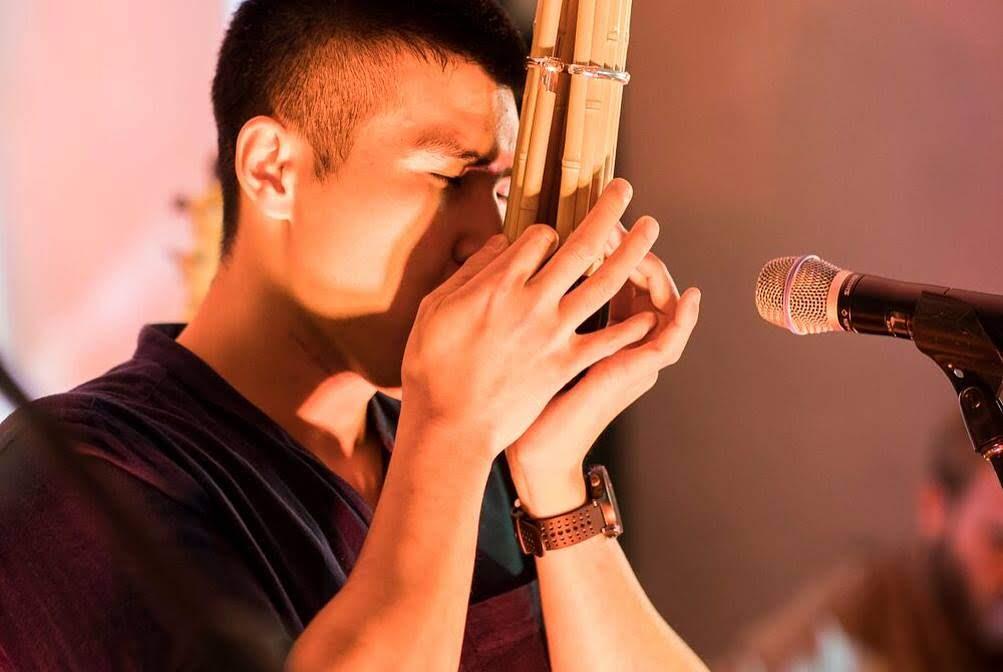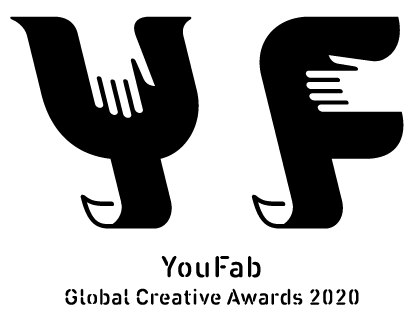[OF MYCE & MANKIND]
Chinese Dizi
King Oyster Mushrooms
-
Work Title
[OF MYCE & MANKIND] - Project 1: The Magic Flute.
-
Work Title(EN)
[OF MYCE & MANKIND] - Project 1: The Magic Flute.
-
Please describe the concept of your artwork in 1000 words.
Even with our hundreds and thousands of online friends and virtual contacts, loneliness is a growing epidemic at the root of many health issues, and the rate of depression has risen in parallel with the introduction of the iPhone. This year has forced us to be more reliant on these technologies for social contact more than ever before. Our online experiences are instantly gratifying and have enabled many opportunities for mankind... but at what cost? Are we losing contact with the one thing that is the most precious to us all - our attention?
For any meaningful contact to emerge, we must begin within. Despite all of our modern day technological distractions, my goal, instead, is for us to use technology and music to establish a deeper connection with our innermost truth. The inspiration for this project comes from the beautiful nature I am lucky enough to be surrounded by here in Mornington - a quiet suburb (especially now) in the Australian state of Victoria, which has been in strict lockdown due to COVID-19. Being away from family and loved ones who are interstate or overseas, I have been living in isolation with minimal physical and social contact for the past six months. It has been a challenging time, but it has also given me some interesting perspectives.
Introducing [Of Myce & Mankind] - a series of multimedia bio-data sonification performances featuring the beautiful Japanese shō and the fascinating kingdom of fungi. Through contactless mediums of sound and sight, each performance aims to provoke thought on a current social topic. It’s an open invitation to examine and cultivate new perspectives on our inner and outer worlds in order to encourage deeper mutual understanding in society.
The title [Of Myce & Mankind] pays tribute to the classical American novel ‘Of Mice and Men’ by John Steinbeck, which centres around the theme of loneliness. Each character in the book wishes for contact and connection, but either fails to do so, or loses the connection they have. The project title also pays tribute to mycelium, the vegetative part of fungi, or nature’s world wide web. After watching “Mushroom. Material. Future”, an online seminar presented by FabCafe Kuala Lumpur earlier this year, I became even more intrigued by the usefulness of mycelium as a material for a sustainable future. It has an abundance of uses from dissolving pollutant to mycocycling to fabric making. Even during times of extreme stress, the mycelium’s hyphae strands’ never ending pursuit for reconnection is an inspirational metaphor for a healthy mind to be social and to reach out to be there for one another. Perhaps by increasing our awareness of this powerful kingdom, we will be able to accept a more complex ecological view of the world. Though these short performances might not be the answer to all of the world’s problems... or any at all... isn’t it nice to just slow down and enjoy a little music anyway?
This entry for the YouFab 2020 award is the first project of the series. Titled “The Magic Flute”*, the performance delves into the topic of cultural appropriation in modern society.
*PLOT TWIST!
The year 2020 is a great example of how things sometimes just don’t happen according to plan. After various attempts to fruit the oyster mushrooms in the Chinese bamboo flute, it has not been successful in time for this submission. Project 1: ‘‘The Magic Flute” will have to wait, we can not rush nature.
Instead, please enjoy project 0.5: 'Introduction':
Before we explore the complex kingdom of fungi and its underground mycelial networks, let’s first introduce ourselves to the more conspicuous and equally fascinating kingdom of plants. -
Please describe the concept of your artwork in 1000 words. (EN)
-
Work Specification
Bio-data sonification hardware and software:
Adafruit Circuit Playground board with sensors for ambient temperature, light, sound. It is connected to an ADS1115 board with crocodile clips to gather electrical signals from living objects to turn into MIDI signals. Midi signals are then processed through MAXmsp computer program, outputted to various synthesisers on Logic Pro X digital audio workstation.
Mushroom cultivation:
Sterilised grains of barley inoculated with King Oyster mushroom liquid culture. Once the grain is colonised, it is placed in various objects of further colonisation and fruiting.
Shō:
A 7th century free-reed wind instrument made from bamboo, it was first used in the Imperial Court music of Japan (Gagaku). After a long period of absence, the shō has had somewhat of a revival in the last half a century due to the increased interest to write for the instrument from contemporary composers, and Gagaku is now on the UNESCO Intangible Cultural Heritage list. -
Work Specification(EN)
-
Media CoverageURL
-
Video URL
https://www.dropbox.com/sh/l29gx4nabyvwidv/AACjZV5wGZsAUNRcRBwFsrOga?dl=0
-
Your OfficialURL (Website, Instagram, Facebook)
henryliangmusic.com
-
Your Profile
Born in China, I began playing the dizi (Chinese bamboo flute) at the age of 6, before moving to Australia at the age of 10. I played music all through high school, continuing into my studies at the Sydney Conservatorium of Music. So far in my life, I have been very lucky to have done some amazing music-related projects. Some memorable moments in the past year include performing with legend cellist Yo-Yo Ma on the same stage as where I performed with an orchestra for the first time as a 7 year old, rocking out on the flute with Andrew Farriss (from INXS) at the Tamworth Golden Guitar awards, and performing at the ANZAC Day commemorative dawn service on historic battlefields in France.
I love playing the shō and creating sounds. In 2015, I had the opportunity to travel to Tokyo to study with shō master Miyumi Miyata thanks to a residency provided by the Columbia University of New York. It was a life-changing experience, and I have been performing the shō wherever I can since my return to Australia. But the fact is, no one else plays the shō in this country, and not very many people know about this beautiful instrument. I have just completed my 7th year as a full-time serving member of the Royal Australian Navy Band on flute, and I am ready to try something new. It’s my dream to return to Japan for further shō studies and have a career as a shō performer, which will allow me to make creative and interesting music with other like-minded (or not) musicians. -
Team Members
Special thanks to Joe Manton for his guidance on MAXmsp, and Eric Lin for his help in the coding of the Adafruit circuit board.
-
Entrant’s location (Where do you live?)
Mornington, Victoria, Australia.


